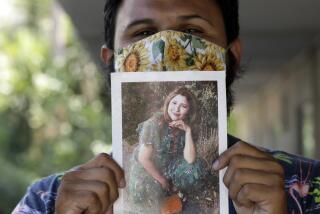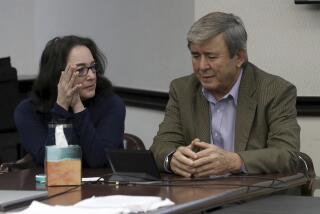Who Should Pay? All of Us
- Share via
Who should pay for the injuries left in the wake of school violence? Who pays for the loss of a child? Who pays the medical bills, including life support, intensive care and physical and psychological rehabilitation?
In other Western nations, the medical costs would be paid through universal health care. But in the United States, the victims’ families bear the brunt--unless they can successfully sue someone whom they prove could and should have prevented the carnage. So, in Jonesboro, Ark., Springfield, Ore., and Littleton, Colo., the school district, the city and the parents or the estates of murdered parents will be sued.
As a member of the Eugene-Springfield legal community, I have talked to lawyers who have been retained to sue on behalf of Thurston High’s injured and dead. The victims’ families sue because they have no alternative means of obtaining compensation to help mend their lives.
Consider how such a lawsuit is likely to unfold. A lawyer is hired who takes the case in exchange for 40% of any recovery. Months pass. Then, unless the parties settle, the victims’ attorneys must prove to a jury that school, city or other government officials or the youthful offenders’ parents were negligent. Years pass. Even if, as is unlikely, liability is ultimately found, some states, such as Oregon, impose limits on the amount recoverable for any one incident from public institutions. The limit in Oregon is $500,000 to pay for all the deaths and injuries. Obviously, the amount that the parents of Thurston High School killing suspect Kip Kinkel accumulated as teachers won’t come close to covering the rest.
I teach tort law--how to sue people--to budding lawyers. The purposes of tort law are compensation, deterrence and punishment. It therefore works best where someone who bears some significant responsibility for the harm has a deep pocket or adequate liability insurance. Tort liability can benefit society: It stops churches from shielding clergy who molest children; it makes car manufacturers provide safer automobiles; it required O.J. Simpson to compensate the Brown and Goldman familes. But, tort liability does not benefit society in certain settings. School violence is one of them.
Injecting lawsuits into tragedies like Thurston or Columbine is wrong.
Lawsuits are adversarial. While intended to make the injured whole, in circumstances like this, such lawsuits tear at the community fabric. With lawsuits on their minds, city officials and school administrators are reluctant to apologize for errors they may have committed. Instead of constructive brainstorming and reflection, the focus is on protecting one’s interests.
Shortly after the Springfield tragedy, while my family was eating supper, the telephone rang. Our policy during meals is to let our machine take the message. We listened to a Fox TV reporter calling for me. My heart sank. I knew before he said so, that he wanted to interview me (the “expert”) about the tort exposure of various parties. My 11-year-old daughter recoiled in horror. Sue the school? Sue the dead parents? How could anyone think about suing at this time and why should anyone be sued? I didn’t return the reporter’s call. It didn’t feel right to opine about potential lawsuits, particularly while the wounds were so fresh. However, I couldn’t stop thinking about how twisted our society must be if the only recourse parents of dead and injured schoolchildren have is to sue.
Only in America is the lawsuit the main mechanism for covering the costs of injuries to the innocent. Lawsuits should not be the only or even the main remedy for school-related violence. Such violence cannot be blamed on one school or community. What happened in Littleton and Springfield can happen anywhere in America so long as we tolerate the toxic mix of antisocial youth and firearms. It is a national problem that merits a national response. And not just the feel-good fix of President Clinton flying in to spend a couple hours consoling the survivors, as he did after the Thurston incident.
The responsibility for these tragedies is all of ours. Therefore, until we solve the problem and stop the killings, we should all bear the cost of compensating the victims and their families. One way to do this is for the federal government to create a compensation plan that pays victims and their families for all intentionally caused physical injuries that occur at schools or school-sponsored events. A program similar to the National Vaccine Injury Compensation Program could be created. This program compensates any child who suffers injuries from vaccination side effects. It allows vaccine manufacturers to continue to offer their life-saving products at a reasonable cost while ensuring that the few unfortunate children who suffer rare but serious side effects have their medical care paid for without enduring a lawsuit. Schools, even more than vaccines, are essential to our society. They provide enormous benefits but are also sites of rare but serious injuries.
Funding could come from general tax dollars. We are spending millions of dollars to assist the Kosovo refugees; the devastation to the lives of the Columbine children, teachers and their families is of comparable magnitude. Or, if we’re looking for a specific source of funding, taxing the purchase of all firearms might be appropriate.
If such a proposal is not politically feasible, then communities must fill the financial void. Until we as a society stop violence in schools, we owe it to the families of those injured and killed to pay their medical bills and compensate their loss. They shouldn’t have to sue.
More to Read
Sign up for Essential California
The most important California stories and recommendations in your inbox every morning.
You may occasionally receive promotional content from the Los Angeles Times.










